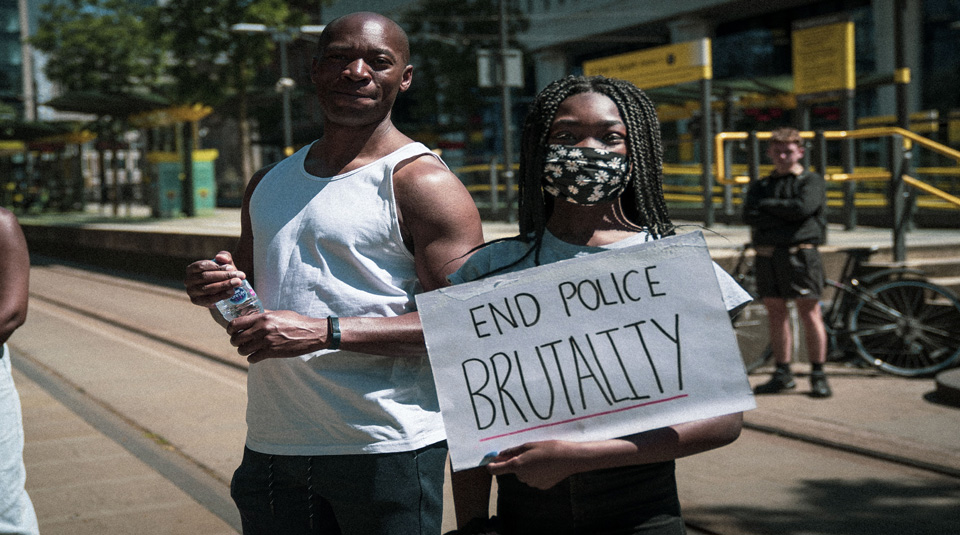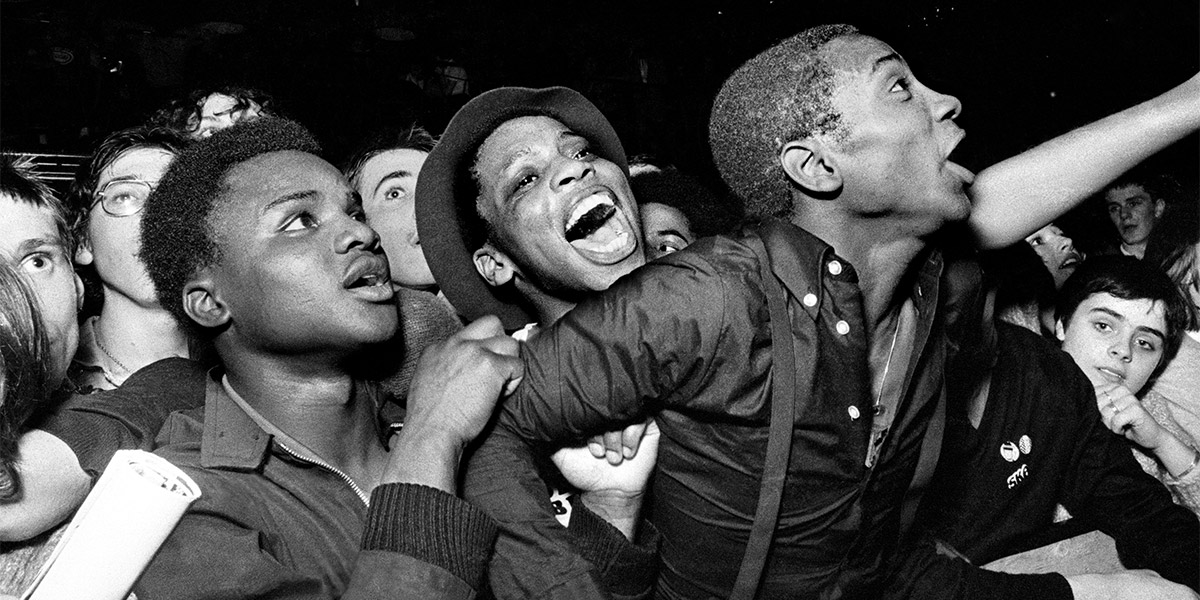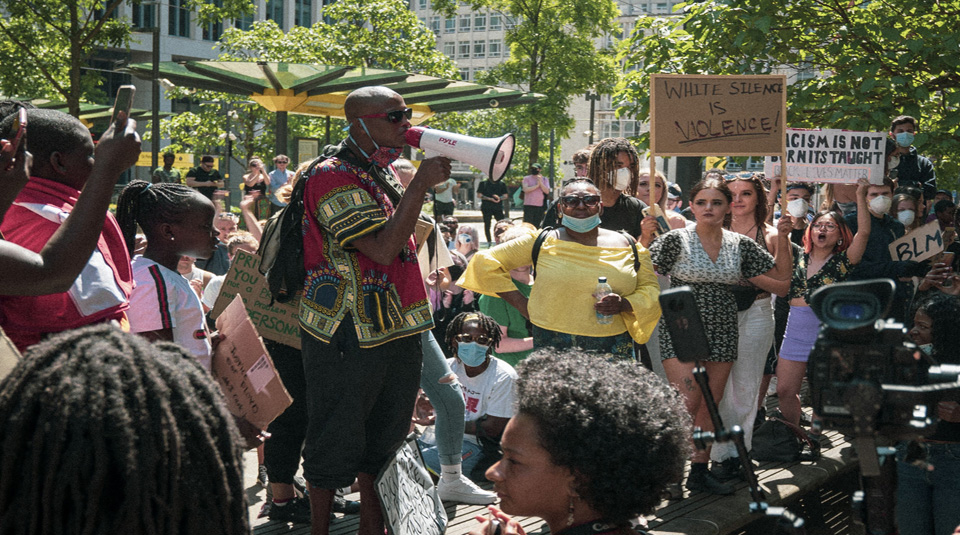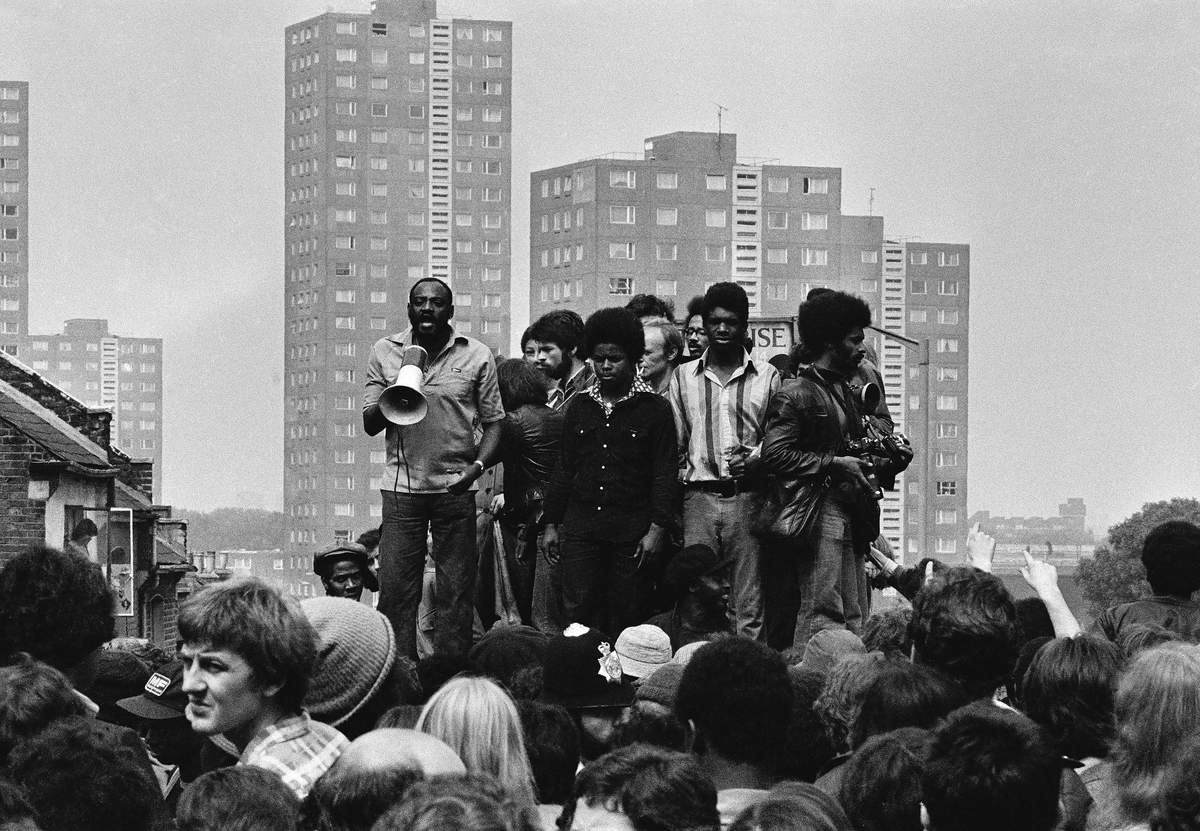By Elisavet Tsakalidou,
Unfortunately, racism has always been a persistent issue in UK society. After the end of WWII, Black people began migrating to the UK due to the country’s demand of workers as to rebuild the economy. Upon arrival, they were met with racism: Not only from citizens who would not treat them as equal, but also from political leaders who were publicly considering them a threat. A prominent example is Enoch Powell’s speech “Rivers of Blood” in 1968, which is a well-known example of xenophobia in political speech. Powell presented the immigrants as dangerous invaders who were to be feared, while also supporting that the white British people are victims of the Black immigrants: “As I look ahead, I am filled with foreboding; like the Roman, I seem to see the River Tiber foaming with much blood”.
This claim erases colonial history and racializes the nation since immigrants are not to be thought of as British citizens and they are stigmatized as the “Other”. After this speech, a Gallup poll conducted found that 74% of British population agreed with Powell’s ideas on immigration and Black people’s position in British society. All of these circulating beliefs and false media portrayals had a tremendous impact on the black subjects who experienced fear and discrimination. Protests emerged in response, and photographs from these events serve as counter-narratives and forms of activism.

The protests that happened during the late 1970’s and the early 1980’s are known as “Rock against Racism”, since they were strongly tied to music events and concerts. They were mostly photographed by Syd Shelton and they were opposing to the far-right organizations like the National Front, proving that racism against Black people was still an ongoing issue even almost thirty years since the first wave of immigration to the UK. The photographs by Shelton portray large multicultural crowds partaking in the protest in London during the month of August 1977.
Shelton’s photos do not solely portray this event; they acknowledge Black political presence at a time when Black people were often erased or misrepresented in the media and they visually create a collective and multicultural identity that could align with Stuart Hall’s idea on ethnicity. In his essay “New Ethnicities”, Hall proposed a new concept of identity which is characterized by non-essentialism, hybridity, fluidity and multiplicity. Moreover, he argued that representations impact the definition of one’s identity and thus, Black people should claim visibility in order to fight systemic racism. This idea is called the “burden of representation” and it is a central notion that relates to how blackness is understood. Therefore, these photographs act as a visual refusal of racial division as it imagines a nation, where hybridity and shared culture are sources of strength and unity.

Similarly to the 1980’s and its movements, in 2013, the “Black Lives Matter” movement emerged in the USA and expanded throughout the whole world. This anti-racism movement aims in the disappearance of violence against Black people, especially in the form of police brutality. After years, it re-emerged due to the murder of George Floyd in the USA by a police officer in May 2020 and thousands of protests took place across the globe, including multiple cities in the UK. It is significant to mention that the protests in UK were not a result of the events in the USA: Due to the Covid-19 pandemic and the lockdown restrictions, the over-policing of Black communities and some instances of police brutality caused a strong growing feeling of frustration and anger.
People’s History Museum provides a plethora of protest photographs taken by Jake Hardy in Manchester on 31 May 2020. During this protest, there was a strong intergenerational presence which highlights that the problem of racism and police brutality is continuous and thus, there is the need for every generation to fight for their rights. All of the images provided by Hardy are emotionally charged, portraying feelings of grief and anger shown through people’s emotional facial expressions while also reflecting collective presence which is a visual performance of solidarity and refusal.

From the previous analysis, photography’s role is understood to be a medium of protest and visual activism and -even though it has changed throughout the years –it has had this role for decades. Both eras, 1980’s and 2020’s use photography as a tool of resistance, reclaiming public space in British society and challenging racist ideas. What has evolved between the two decades is the technology tools: from black-and-white prints in analogue cameras to digital photography and extensive social media use. The latter have given a great opportunity to the “Black Lives Matter Movement” to expand on an international level and create self-representational images.
The previous analysis highlights the role of protest photography and visual activism as documentation of significant events, but most importantly as an act of political resistance towards the racist and anti-immigration attitudes that Black people experienced in post-war Britain. The two movements, “Rock against Racism” during the 1980’s and “Black Lives Matter” in 2020, and their protest photographs, emphasize the need for self-representation and the creation of a new hybrid identity. As Stuart Hall argues, identity is shaped through the struggle of representation, and these photographs represent key moments in the continuous shaping of Black British identity. This belief is contrasted to the exclusionary ideas supported in Enoch Powell’s “Rivers of Blood” speech and these images certainly serve as powerful counter-narratives —asserting Black presence, agency, and promoting solidarity. Taking everything into consideration, it is essential to understand the historical continuity of anti-racist activism and preserve visual activism, through which equality continues to be claimed.
References
- Black Lives Matter. Encyclopedia Britannica. Available here
- Multiculturalism ‘Failed’ for Substantial Minority of Britons – Integration Survey. The Guardian. Available here
- Joseph–Salisbury, Remi et al. “The UK Is Not Innocent: Black Lives Matter, Policing and Abolition in the UK.” Equality, Diversity and Inclusion: An International Journal, vol. 40, no. 1, 28, pp. 21–28.
- Images of Protest: Black Lives Matter. People’s History Museum. Available here
- Schneider, Nicole Anna. “Black Protest on the Streets: Visual Activism and the Aesthetic Politics of Black Lives Matter.” Current Objectives of Postgraduate American Studies, vol. 18, no. 1, 6.
- Remembering Rock against Racism with Syd Shelton. Fred Perry UK. Available here




